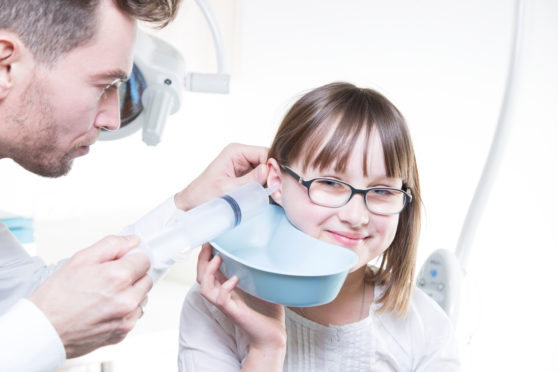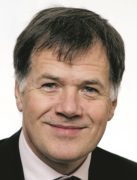Thirty-five years ago, it was deemed perfectly reasonable to send a fresh-faced medical student off unsupervised, with only the briefest of instructions, to syringe a patient’s ears.
This was one of my first one-to-one patient encounters in my student attachment in general practice. I was nervous, trying to remember everything I had been told about the water temperature, the direction to point the large, stainless steel syringe and the importance of not soaking the patient. My hands were shaking as I drew up the first syringe of water, aimed it in the patient’s ear and began the procedure.
It seemed to take forever. But finally, a broad bean-sized lump was slowly delivered, plopping into the waiting receptacle. I wanted to punch the air and dance around the clinic, desperate to show off the floating globule to the patient who, understandably, was having none of it. But the result for the patient was even more gratifying: her hearing had returned.
Those short weeks in general practice as a student confirmed to me that this was what I wanted to do with my life – to make a difference, but not to tie myself to any one specialist area. Despite being left to my own devices with the earwax that day, I always worked closely with my GP supervisor, seeing patients and trying to be useful in any way I could. Unfortunately, there weren’t any more ears to syringe but the rest of it was wonderful.
Some years later, a few years after starting in Dingwall as a GP partner, I was contacted by Henry, a family friend, asking if he could arrange an attachment to Dingwall from his medical school in London. Oddly, no one asked what teaching or educational experience I had, and I was too inexperienced to know that would have been sensible. He arrived for six weeks and stayed with me, my wife and our baby so we had an interesting dynamic: a professional teaching relationship during the day and long, happy evenings putting the world to rights at home in front of the fire.
I was anxious at the beginning: what happened if I he realised I didn’t always know what to do? But it didn’t take long to find that it was okay to admit I was still learning, and we learned together. These were the best bits. Henry is still a good friend. He lives in Suffolk with his wife and family and has been a GP for almost as long as me.
After Henry’s attachment, I decided to become more involved in teaching. This meant learning how to teach. Even when I think I know what I am doing, I find that teaching it to another person forces me to consider not only what I do but more importantly: why.
Dingwall has always been a teaching practice with a long history of teaching medical students and doctors. It now hosts medical students for an entire academic year as well as placements that last between four and eight weeks. The year-long placement is a huge leap forward in the advancement of general practice as a vocation and the benefits to the students are huge. They can follow a patient’s progress from diagnosis to, hopefully, cure – and experience for themselves the deep satisfaction of walking with a patient on their journey.
So, if Tom, the Dundee student who is with us now, sees a patient with a breast lump he will write the referral letter to Raigmore Hospital, then get the chance to attend the outpatient clinic when she is seen. He may even attend the operating theatre, should an operation be needed, before the patient returns home to be once again cared for by our practice. Doctors taught this way say how much they love seeing the whole patient and being involved in the whole pathway of care.
I hope we never take our patients’ involvement in teaching for granted. We make it clear to patients that we are a teaching practice and that a medical student may be involved. The patient, of course, has the option not to take part but in reality, this rarely happens. I’m always touched to see how happy patients are to be helping teach our future doctors.
The process goes like this: Tom will see the patient on his own first, before phoning through for the doctor to attend. When I arrive I’m usually met with a clearly-structured patient description of the patient’s problem and examination findings, but more importantly, given that his consultation times are longer, Tom may have gained further insights that I might have missed.
As Tom and I discuss the case, possible diagnoses and treatment options, it is inspiring to see how our talk can engage the patient as they begin to understand how our thinking works.
The best bit is the end. Often, the patient will offer a handshake, sometimes accompanied by positive feedback and wishing Tom well in his studies. I think they realise there is a fair chance Tom may one day be back.
Dr Miles Mack is a GP in the Highlands and the former chair of the Royal College of General Practitioners Scotland

